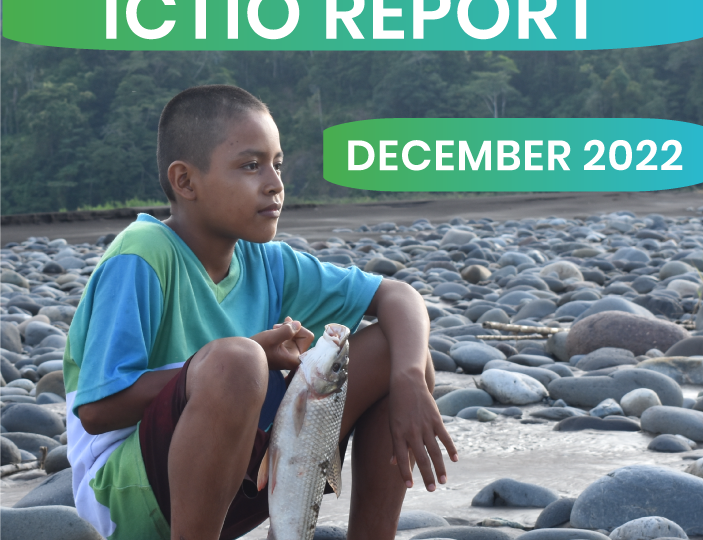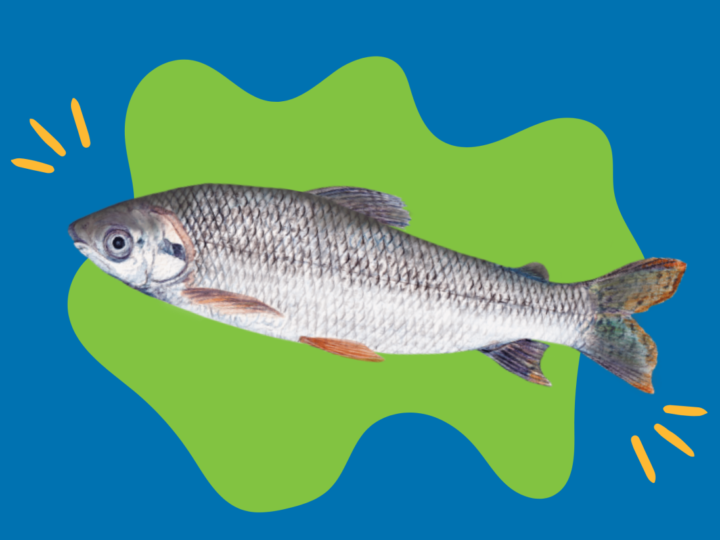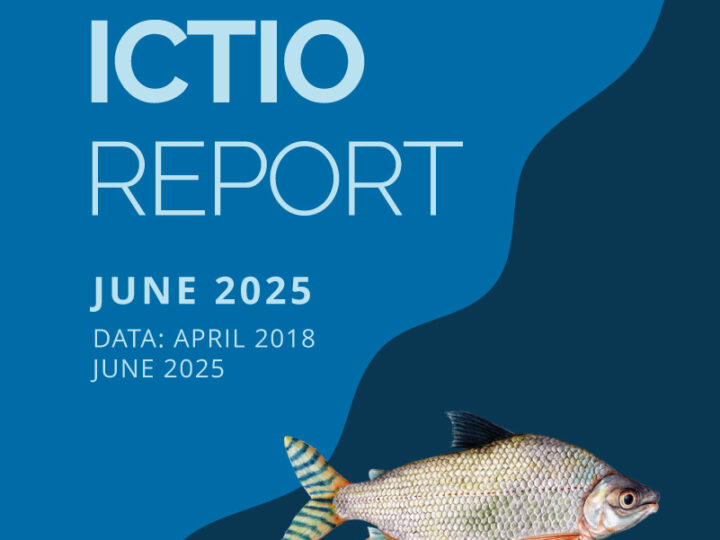Ictio in numbers: 131,281 observations of 119 species or fish groups, thanks to the collaboration of 714 citizen scientists and organizations (Figure 1).

Figure 1 – As of September 30, 2024, Ictio has gathered a total of 131,281 fish records distributed across 83,932 observation lists (fishing events). These data cover 78% (155) of the 199 level-4 subbasins in the Amazon, an achievement driven by the contributions of 714 participants and organizations.
Fish observations in Ictio cover 78% of the 199 level-4 subbasins (BL4) in the Amazon, that is, 155 subbasins (learn more about basin classification in Venticinque et al., 2016). The subbasin ‘Madeira – upper Jamari’ leads the number of records with 21,311 observations, followed by the subbasin ‘São Manoel – upper Peixoto de Azevedo’ with 17,502 observations, and the subbasin ‘Amazonas/Solimões – between Juruá and Negro’ with 14,824 observations (Figure 2).
Increase in observations in the third quarter of 2024
Between July and September 2024, Ictio experienced an increase in observations from the upload platform, where Ictio’s partner organizations upload data from their monitoring with fishers. The basins that stood out for their highest percentage growth during this semester were: Manissauá-Miçu and Xingu (upper Suiazão), both in the Xingu River basin; and the Juruena subbasin (lower Rio do Sangue), all in Brazil. Additionally, the Beni River subbasin (upper Madidi) in Bolivia stood out for the significant increase in the total number of observations, thanks to monitoring conducted using the Anecdata application.

Figure 2 – Level BL4 subbasins with the most records in Ictio as of September 30, 2024.
Recorded species
Ictio allows the registration of up to 130 species or species groups, along with the option ‘Other fish’ (‘Fish sp’) for those fish not previously cataloged. It is essential that when using this option, the fish name is provided in the comments field, which helps update the database and promotes the inclusion of new species. This is then incorporated into the database review, allowing for the precise identification of previously unrecognized fishes.
Of the 119 species or species groups documented as of September 2024, the thick-scaled yaraquí (Semaprochilodus insignis) remains the most recorded species with 8,574 observations, followed by the bocachico (Prochilodus nigricans) with 7,684 observations and the gamitana (Colossoma macropomum) with 7,540 observations (Figure 3). These data reflect the diversity of species in the Amazon Basin.

Figure 3 – Most recorded species/species groups in Ictio as of September 30, 2024.
ICTIO PREPARES FOR A NEW DATABASE FORMAT
With the success of Ictio and its contribution to the knowledge of fish in the Amazon Basin (learn more in the Ictio data potential analysis here), we are updating the database to launch it in a new format. This update not only involves technical improvements in data storage and uploading but also incorporates new variables to enrich the observation records.
The update process will take several months. Currently, a thorough review of the database is underway. The individuals responsible for the review are assessing each record to verify its accuracy and correct typographical errors that may have caused incorrect records about weight or quantity. Additionally, they are reviewing the photos provided by users to ensure proper species identification and facilitate the registration of identifiable species that were previously classified as ‘Other species.’
As the database is improved, new data collection protocols with other tools such as Anecdata are being developed. Moreover, work is underway to implement SMART and EarthRanger protocols. These advancements will enable citizen scientists to record observations easily and visualize results efficiently.
GLOSSARY
Checklists: Lists of fish caught in a fishing event.
BL4 Basins: Basin level 4 is the scale that delineates all tributary sub-basins between 10,000 km² and 100,000 km².
Observations: Records of species/groups of fish species caught in the Amazon Basin.
Users: Amazonian citizens using the ICTIO application or platform, consisting mainly of local and indigenous peoples, individual fishers, management groups, associations of fishermen, and scientists.

This note is made possible thanks to the support of the Gordon and Betty Moore Foundation and of the people of the United States through the United States Agency for International Development. The content is the responsibility of the Wildlife Conservation Society and does not necessarily reflect the views of the Moore Foundation, USAID, or the United States Government.






